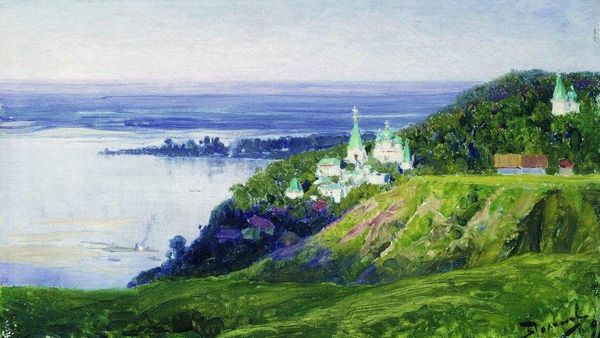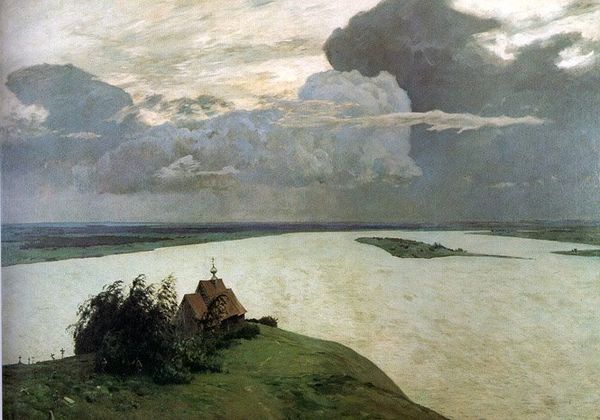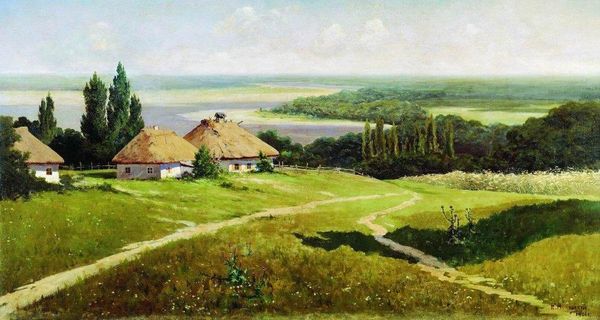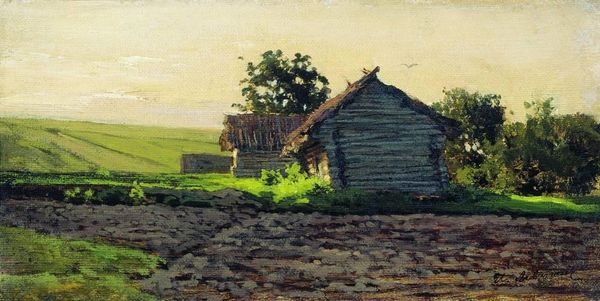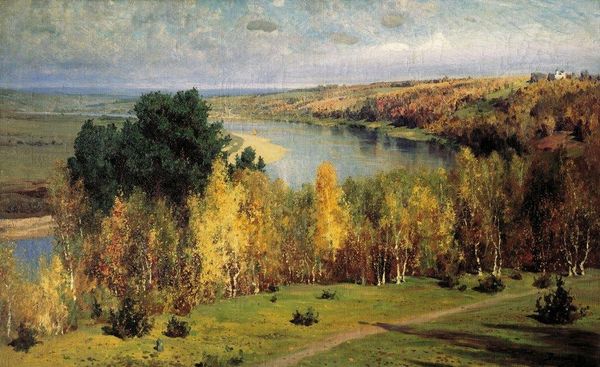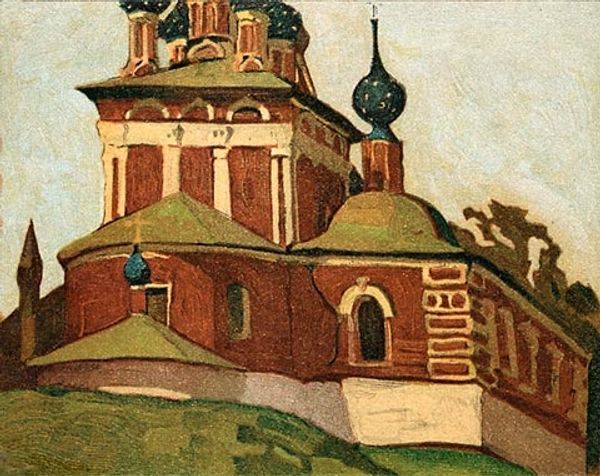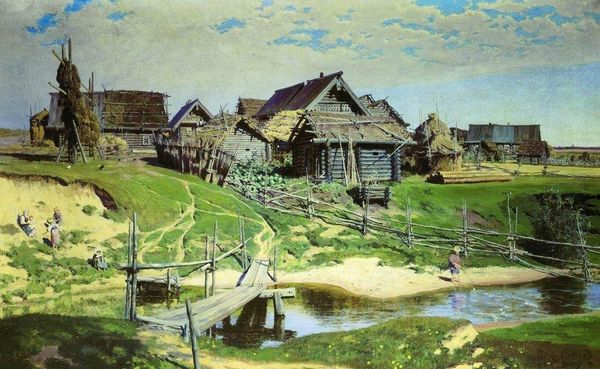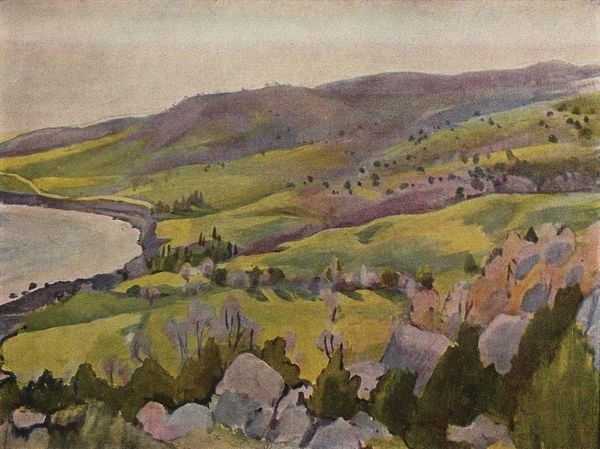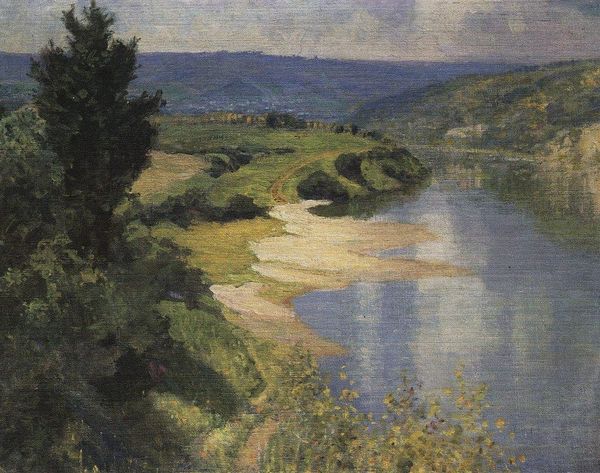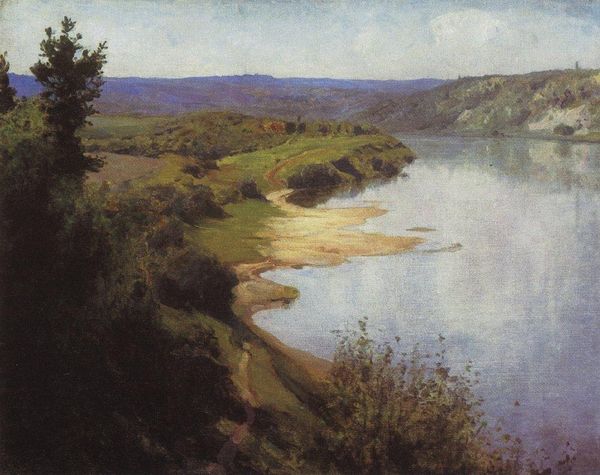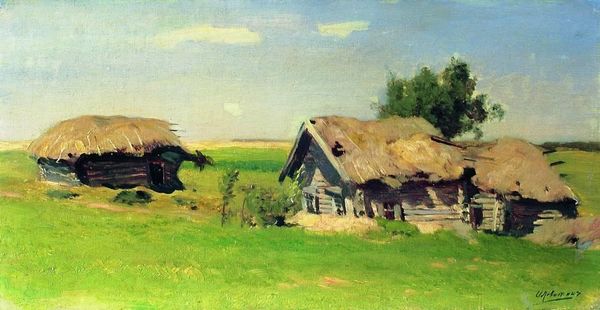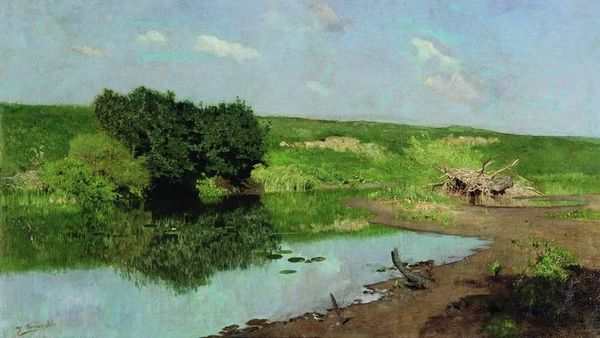
Copyright: Public domain
Curator: Vasily Polenov painted this small, serene landscape, “Chapel on the Banks of the Oka,” in 1893. It appears to be oil on canvas. The work has a quiet feel. What are your initial impressions? Editor: It feels melancholic. The colours are muted, the river calm. Even though it's bright, there's a stillness, a solemn quality given to the place and the building. It feels like a lost world. Curator: I notice the materiality and how it intersects with Polenov’s context. Oil paint allowed for this level of atmospheric depiction, but also for a degree of precision in representing textures: the wooden logs of the chapel, the different kinds of green of the foliage. It is really detailed and the impressionist style helps evoke a palpable sense of rural Russia in the late 19th century, highlighting a connection with nature. Editor: The chapel as a central motif definitely plays a symbolic role. Churches and chapels in art represent more than just religious buildings, frequently acting as symbols of stability, cultural identity, and tradition. Their placement within the natural landscape emphasizes humanity’s relationship with nature. Curator: Agreed. The artist emphasizes the hand-made structure and uses impasto to bring texture. It draws our attention to how Polenov is deliberately foregrounding the role of building, constructing this particular cultural identity and historical perspective. What is really catching my eye is how he juxtaposes traditional methods with the industrial revolution era in Russia. Editor: And think of the golden dome and cross. Even in muted tones, that little flash signifies spiritual authority, faith, tradition, all things eternal. Set against the changing seasons, that image suggests resilience and timelessness. The work reminds us of our innate need to connect to something greater. Curator: The work really does allow you to understand something about the artist's own values and investment, not to mention the physical act of constructing the image through careful brushwork and layers. The painting as a historical document almost. Editor: A humble document maybe, but one resonant with feeling, reflecting on a nation’s cultural spirit through its most enduring symbols. Curator: Absolutely, viewing art with both lenses provides such an enriching understanding. Thank you.
Comments
No comments
Be the first to comment and join the conversation on the ultimate creative platform.
